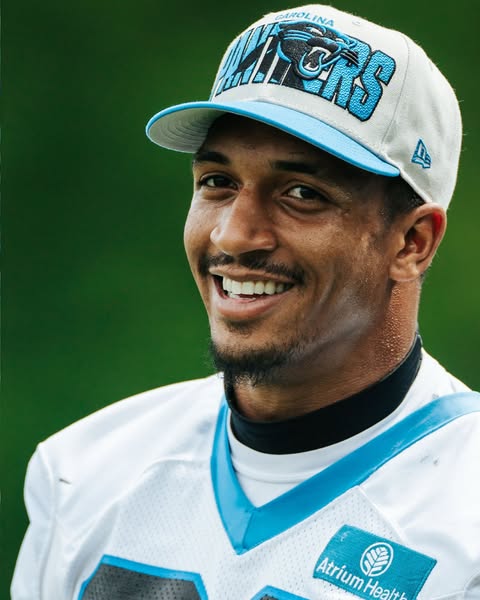The Arizona Cardinals have quietly had one of the more intriguing offseasons in the NFL, and while they may not be the media darlings of free agency or splashy in the trade market, the steps they’ve taken suggest a long-term vision that’s beginning to take real shape. Coming off a 4–13 campaign, the Cardinals entered the offseason with a multitude of needs, a new identity forming under head coach Jonathan Gannon, and one of the most flexible positions in the league: a top draft pick and cap space. While many teams chase headlines, Arizona has methodically built a foundation that could make them a dark horse in the coming years — or at the very least, a tougher out in 2025 than many expect.
Much of the focus this offseason has been around Kyler Murray. After returning late in the 2023 season from a torn ACL, Murray’s presence in the lineup was a reminder of how dynamic he can be when healthy — and how far the team still has to go to support his unique talents. The front office made it clear that Murray remains the franchise quarterback, and the 2024 offseason was built largely around supporting him. That began with the draft and free agency, where the Cardinals made a concerted effort to improve both the offensive line and the weapons surrounding their signal-caller.
Arizona held the No. 4 overall pick in the 2024 NFL Draft and used it on Marvin Harrison Jr., widely regarded as one of the most complete wide receiver prospects in recent memory. Harrison is expected to be a day-one difference maker, giving Murray a true WR1 who combines elite route-running with size, hands, and polish. The Cardinals haven’t had a weapon like him since DeAndre Hopkins’ peak years, and his addition immediately raises the ceiling of the offense. He isn’t just a complement to what Arizona already has — he’s a potential cornerstone piece who should draw coverage and make life easier for everyone else on the field.
Beyond Harrison, the Cardinals made several other draft moves that signaled a shift in team-building philosophy. Rather than swinging for raw upside or luxury picks, they prioritized toughness, versatility, and character — hallmarks of a team trying to change its culture from the ground up. They addressed both sides of the trenches, picked up more help at cornerback, and added depth at running back and linebacker. For a roster still lacking star power in many spots, it was a class designed not only to contribute in 2024 but to grow into core roles by 2025 and beyond.
Free agency was less about big-ticket additions and more about value and fit. Arizona stayed relatively conservative, opting not to chase top-of-market players, but they did bring in reinforcements in key areas. Jonah Williams, signed from Cincinnati, is expected to start at right tackle, solidifying an offensive line that needed upgrades both in pass protection and in run blocking. Along with the continued development of Paris Johnson Jr. on the left side, Arizona now has bookend tackles who are athletic and young — an essential ingredient for keeping Murray upright and mobile.
The team also addressed the interior defensive line, a longtime weakness, by signing veterans who bring a physical edge and run-stopping ability. These aren’t flashy names, but they fit the system Gannon wants to run — disciplined, tough, and versatile enough to rotate across fronts. The goal is to build a defense that can at least hold the line while the offense develops into a top-tier unit. The Cardinals won’t suddenly transform into a top-five defense, but they no longer feel like a team that will get pushed around every Sunday.
One of the more underrated aspects of this offseason has been the continued maturation of head coach Jonathan Gannon and his staff. Year two for any head coach is critical, and Gannon now has a better grasp of the roster, the system, and the direction he wants to steer the team. He’s laid the groundwork for a more physical, competitive squad, and by all reports, the locker room is buying into his messaging. The culture shift is palpable — less about slogans and more about accountability. The Cardinals may still be rebuilding, but they’re no longer rudderless.
That said, there are still plenty of question marks heading into the 2025 season. The pass rush remains a concern. Arizona didn’t land a premier edge rusher in free agency or the draft, and they’ll likely rely on a mix of young players and rotational veterans to generate pressure. That’s a risky proposition in a division that features dynamic quarterbacks and creative offensive schemes. The hope is that the scheme itself — which emphasizes disguises and varied pressure looks — can compensate for the lack of elite talent off the edge. But it’s a gamble, and one that could come back to haunt them against better opponents.
In the secondary, the Cardinals have potential but lack proven depth. Budda Baker remains a cornerstone, but he’s entering the final stages of his contract and may or may not be part of the long-term future. The young corners are promising, but they’ll need to grow up fast. If the front seven doesn’t create consistent pressure, the back end could be exposed against teams with high-powered passing attacks. That makes the development of the secondary one of the most important storylines to watch during training camp and early in the season.
Offensively, all eyes will be on Kyler Murray — not just how he plays, but how the offense evolves around him. New offensive coordinator Drew Petzing has had a full offseason to implement more of his system, and with a more complete supporting cast, the excuses are beginning to evaporate. Murray still has the athleticism that made him a No. 1 pick, but he needs to take that next step in processing, consistency, and leadership. His relationship with Harrison Jr. will be key, but just as important is his ability to spread the ball around and command the offense from the pocket when needed.
James Conner returns as the lead back, and while he remains a physical presence, durability is always a question. Arizona did add depth at the position, hoping to keep Conner fresh and provide more explosiveness out of the backfield. The running game doesn’t need to be dominant, but it needs to be effective enough to keep defenses honest and give Murray room to operate in the play-action game. If the line holds up and the backs stay healthy, this offense could be sneaky productive — even if it’s not quite elite.
The NFC West remains one of the tougher divisions in the league, and the Cardinals will still enter the season as underdogs. But unlike last year, there’s a sense that Arizona is building toward something rather than just trying to stay afloat. The team’s young core is growing, the coaching staff is stabilized, and the vision is starting to come into focus. With more draft capital coming in future years and a quarterback entering what should be his prime, the window isn’t open yet — but you can finally see it on the horizon.
Perhaps the most impressive part of the Cardinals’ offseason is the restraint they’ve shown. In an era where teams are constantly chasing headlines and immediate returns, Arizona has stuck to a plan that prioritizes sustainability and growth over flash. That’s not always popular with fans or pundits, but it’s often the path that leads to real success. If this team continues to draft well, develop talent, and keep its stars healthy, they could be a serious threat within the next couple of seasons.
For now, the 2025 season will be a proving ground. A chance to show progress. To be more competitive. To win more of the close games they lost a year ago. No one is predicting a deep playoff run just yet, but no one is overlooking Arizona anymore, either. And that alone is a testament to how far they’ve come in just a year.



